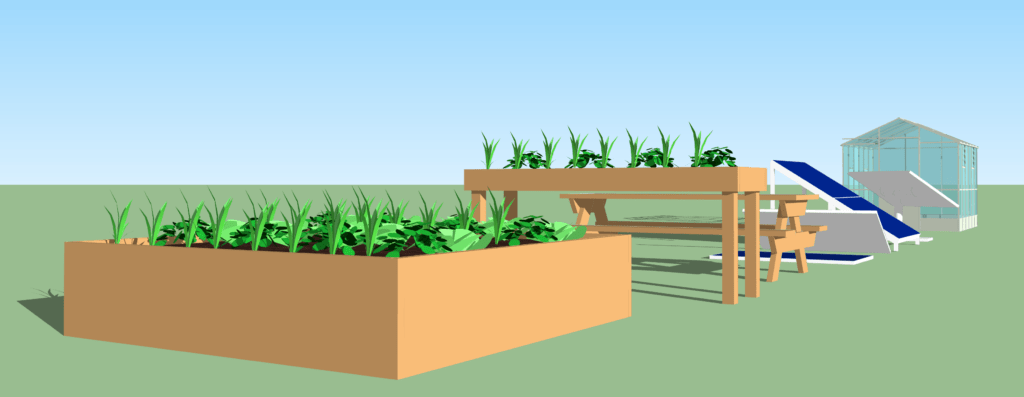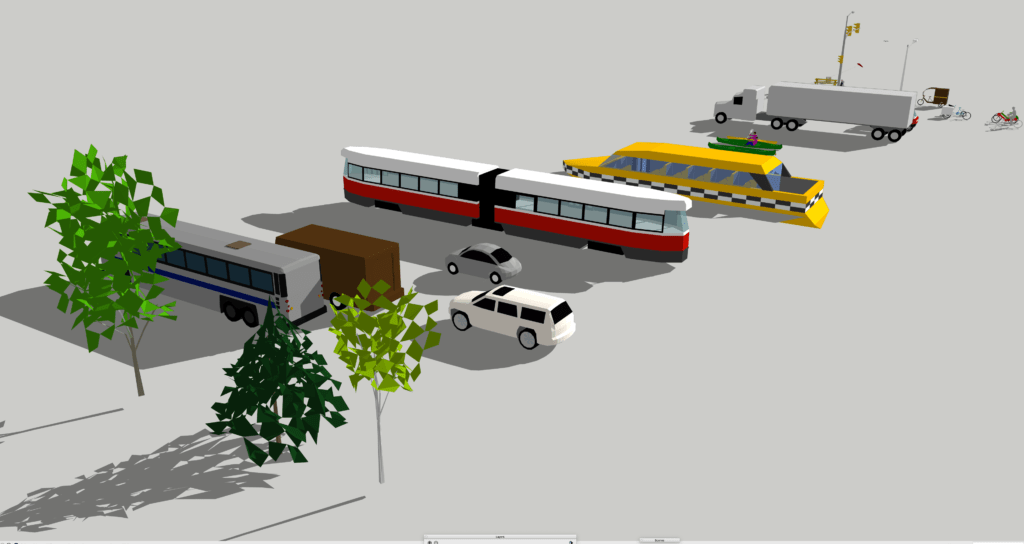by Carl Skelton
Fall 2018
Teaching-with-Technology Grant Awardee
The idea for a progressive 3D asset library came out of several years of teaching and workshop experience at Gallatin and around the world, from summer participatory workshops in Germany to youth empowerment on First Nation lands in Canada. Too often, workshop participants would get bogged down trying to populate models and interactive media with people, vehicles, and plants downloaded in a rush from swap sites or the 3D warehouse—files too big to run in their applications, assets with wildly inconsistent levels of quality or look-and-feel, and images with irrelevant demographics (way too many trolls, orcs, and Sailor Moons, not nearly enough cultural variety).
“For Pasan to represent [the South Asian] community without trying to construct a generalized set either to or against stereotypical expectations of what that might look like, he had only to model real people as he knows them.”
The scope of this project was to produce a pilot or proof-of-concept. For the first set in what will hopefully be an expanding asset library, we erred on the side of low-poly figures, with a view to making it practical to populate large scenes, with an emphasis on outdoor activities: sports, recreation, social activities.
We worked with Jee Won Kim, an architect (and firm) with extensive experience in crossover situations between architecture and media arts, and Pasan Dharmasena, a Gallatin student. In the image above, Pasan is the one on the left, standing next to his sister and parents, with an unrelated tennis player in between. The strategy here was simple enough: if Pasan happened to be South Asian, there was no better person to represent that community on the modeling team. For Pasan to represent that community without trying to construct a generalized set either to or against stereotypical expectations of what that might look like, he had only to model real people as he knows them. The big surprise for me wasn’t the fact that his dad is a doctor—even on the weekends, apparently—but the similarity of dress between his mom and his sister.
Will we be able to use this family group in Wikwemikong next time we’re up there, and have everybody there assume they represent a contemporary Anishanabe family? Oh, probably. Will the next South Asian student who contributes to the library have other ideas, or grandparents and toddlers to add? We hope so.
Another asset category that has been a chore to deal with effectively in short-form modeling and interactive projects has been low-poly flora and furniture with definable performance characteristics for sustainable development/redevelopment scenarios: community garden plots with specific capacities and volumes of soil; wheelchair-accessible variants; solar panels with known capacities and efficiencies; and vehicles with defined carrying capacities, ranges, and rates of fuel/power consumption.

Accordingly, most of the other models are being built with equally efficient/sketch-level geometry, but full metrics: the SUV gets 15 miles to the gallon, the birch is of a particular age and trunk girth, the seating capacity and average speed of the electric trolley is defined.

I’ll be working with Jee Won on certain components of the project through the fall of 2019, and making this first selection of assets available to students in my “Making Virtual Sense” undergraduate arts workshop course in the fall. My goal is to stimulate some dialog about what should be added next, both as prompts to critical consideration of projects at their onset, and as resources to produce and complete projects on time that don’t drain creative resources in the home stretch of production for individual students and small teams on tight schedules.
Stay tuned,
-Carl